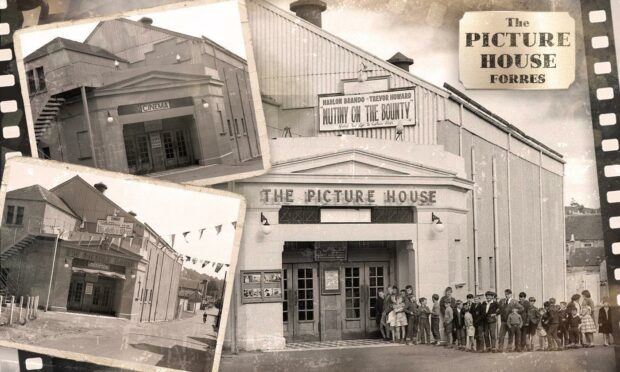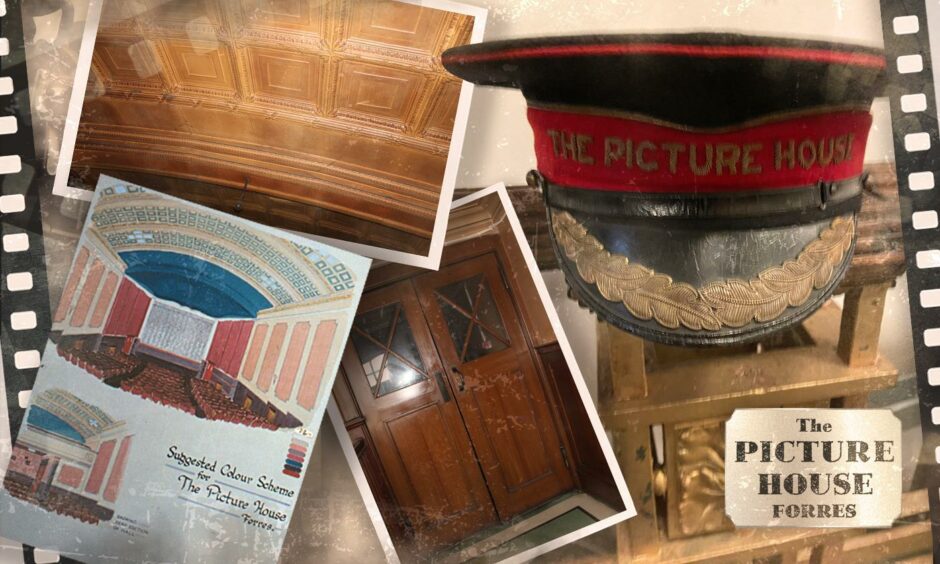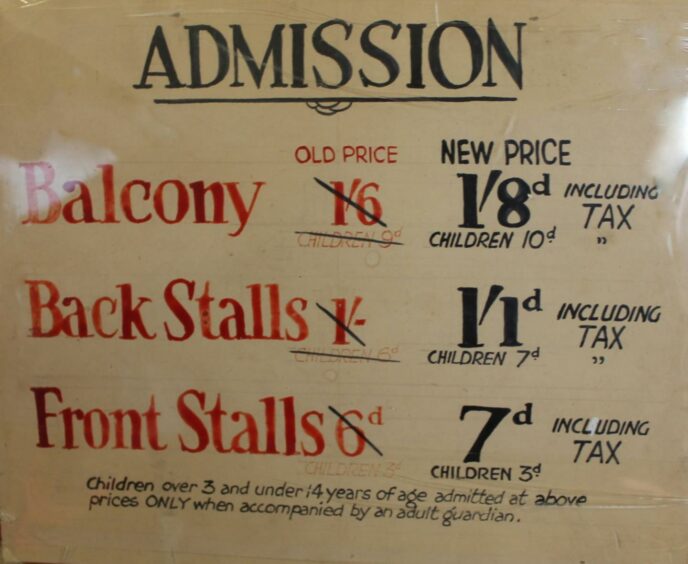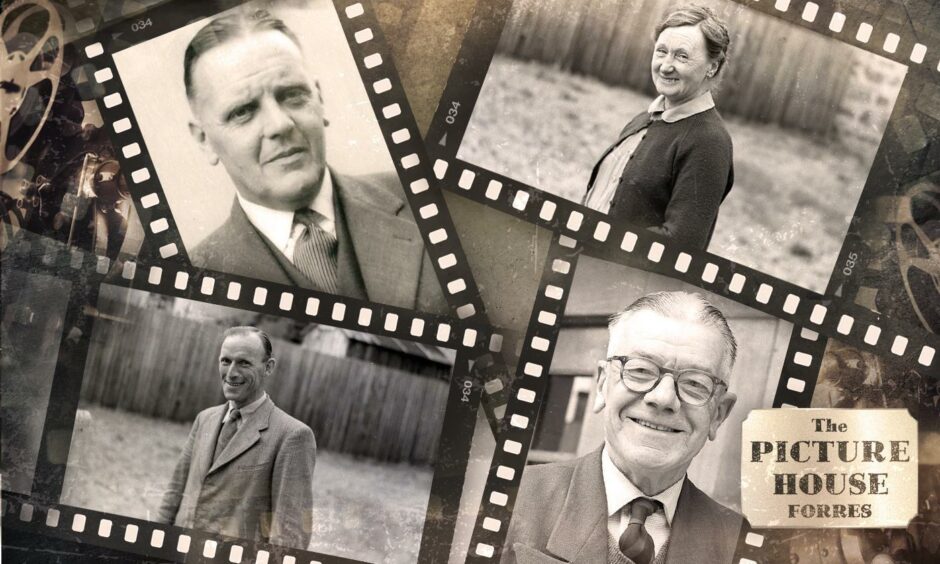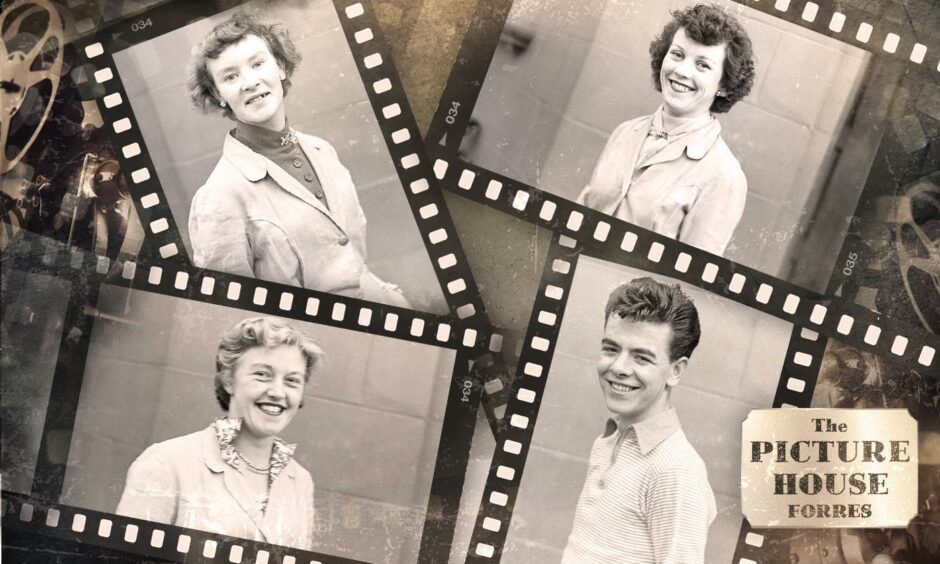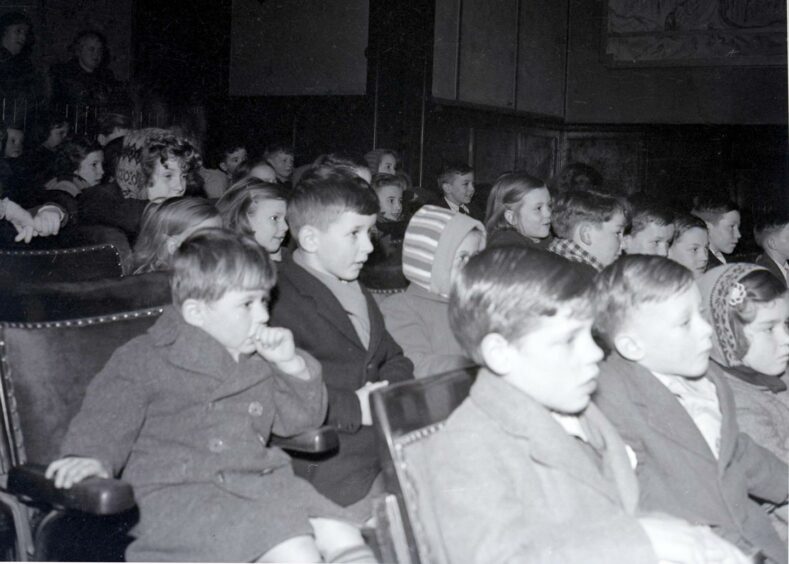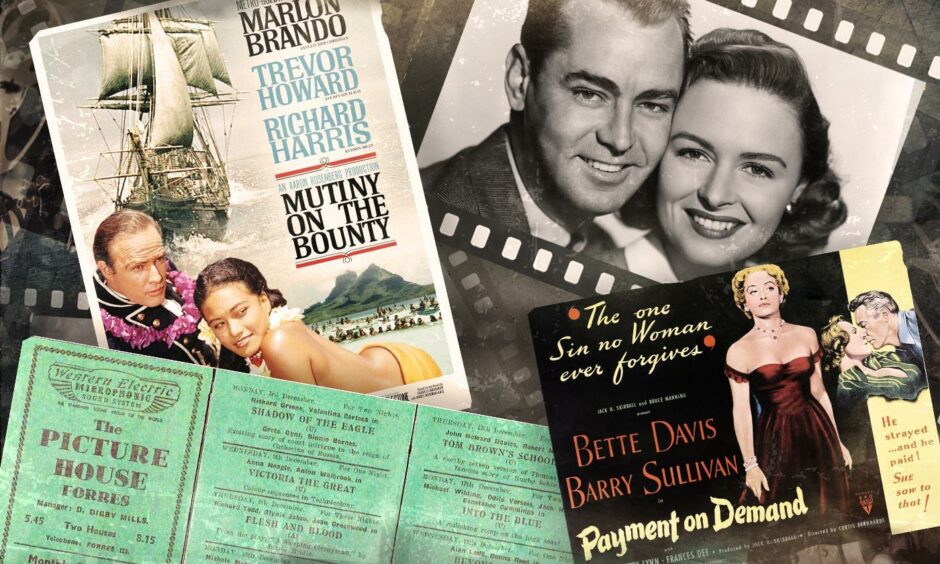Growing up in Forres was uniquely special for Ray Mills.
His father, D. Digby Mills was manager of the Forres Picture House for 30 years, until his death in 1961.
Ray and his brothers had the run of the place, from the metal-clad projection room to the art deco balcony, not to mention often shinning up a ladder to the billboard above the main door to paste up the forthcoming attractions.
Forres Picture House opened on Cumming Street in November 1927, taking over from the Lyceum Cinema which had been operating in Caroline Street since January, 1913.
“They were proud, proud folks in Forres when the Picture House opened its doors to the public for the first time and started on what promises to be an auspicious career,” reported The Bioscope.
The architects were Carruthers, Ballantyne and Taylor of Inverness, and their craftsmanship came in for praise.
The design, in synthetic stone at the front entrance, found favour, as did the oak entrance doors with their bevelled glass panels, giving ‘a richness of tone’.
The interior was spacious, with red plush upholstery (except for the hard wooden seats at the front) and central heating, which must have gladdened the hearts of many a Forres resident.
There was seating for 650, including 100 on the balcony.
Home to unusual features
Unusually, the projection room was under the balcony behind the rear stalls.
It boasted two Kalee projectors to ensure a ‘flickerless picture’.
The auditorium had a 21 ft stage, and an ornate pressed metal ceiling, painted to look like wood and plaster.
Fire was an ever present hazard, so the projection room was lined with stainless steel panels in case a reel of notoriously unstable celluloid decided to burst into flames.
The Lyceum’s manager J R Bernard took over the running of the new picture house, along with his entire staff, while the Lyceum building was sold to the Old Soldiers’ Association.
Just before Mr Mills took over, the Forres Picture House installed ‘the latest and most successful all-British talking picture apparatus’, Gaumont’s British Acoustic Sound System, which promised to ‘eliminate all possibility of stoppage or breakdown during a performance’.
The musical comedy Sunny Side Up with Janet Gaynor and Charles Farrel, took the people of Forres into the age of the talkie.
Ushering in a new era
D. Digby Mills came from Dennistoun in Glasgow, and took over from James Bernard after he moved to Edinburgh in December 1930.
That decade saw the redesign of the proscenium, enlarging it to 24ft wide using plans by Alister Gladstone MacDonald, the architect eldest son of the first Labour prime minister and son of Lossiemouth, Ramsay MacDonald.
Ray’s early memories of the cinema are from when seats ranged from 9d to 2/7d.
He said: “The front stalls, the ‘ninepennies’, were constructed of hard wooden seats on metal frames.
“Whenever there was a breakdown in the film reel, or a really exciting part of the movie came on, the children at the front would rattle these seats to a deafening crescendo.”
There were two sittings, the first at 6pm, the second at 8pm.
Plenty of value for money with short films, including documentaries, cartoons and newsreels preceding the main event.
Ray said: “Programmes were printed for the forthcoming month, with different films being screened three times weekly.
“The theatre was closed on Sundays.”
Queues for the shows would often stretch from the Picture House up Cumming Street and around the corner on to the High Street.
Christmas and New Year holidays were illumined for the children by special matinee performances.
Mr Mills’ first festive season saw 450 children turn up and cheer wildly when he and the sponsor, Mr Bisset of Moray Park, handed out bags containing cakes, fruit and a freshly minted penny.
A different time
Ray vividly remembers what now seems extraordinary – customers smoking throughout, requiring the usherettes to walk the aisles squirting a rose-scented water spray to bring a few minutes of relief from the fug.
Eldorado ice cream and Rowntrees’ chocolates were sold at the cash desk, as well as by the usherettes, from illuminated trays.
Ray said: “For many local people the Picture House was a great source of entertainment which helped draw the community together, providing common talking points.
“For days after a popular movie, people would talk about what they had seen ‘at the pictures’.”
Once television encroached into every home, the cinema’s hey-day was over.
The Forres Picture House closed in June 1964, and was bought by William Fyfe as a furniture depository.
It was then converted into the present day international removals and storage facility run by White & Co Ltd.
Meanwhile Ray holds the archive of thousands of photographs, including the ones seen here, taken by his father and mother Sybil in a business they ran supplying pictures to the local press, and covering weddings and events.
With Forres Heritage Trust, he helps to mount popular exhibitions from the multi-sourced collection twice a year in the Tolbooth building on Forres High Street.
The good news is that after a pause for the pandemic, the exhibitions will hopefully start again in May, Covid permitting.
More like this:
Memories of iconic Tain Picture House as curtain set to rise on new era
